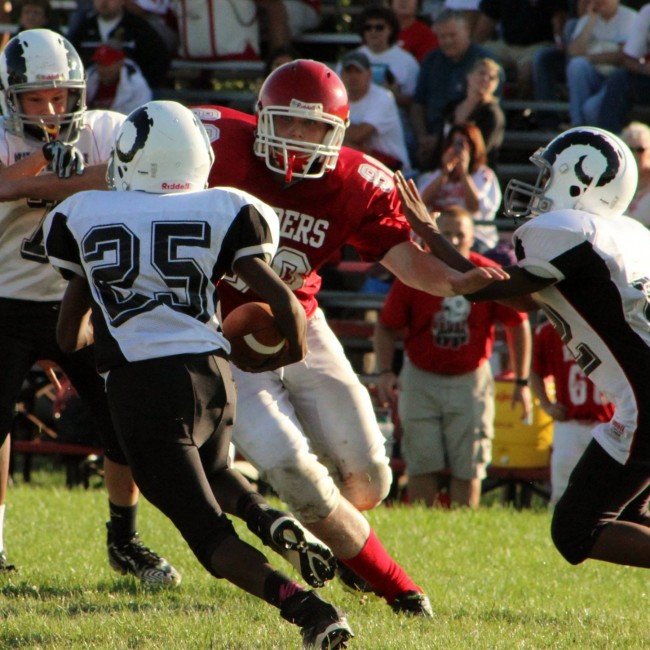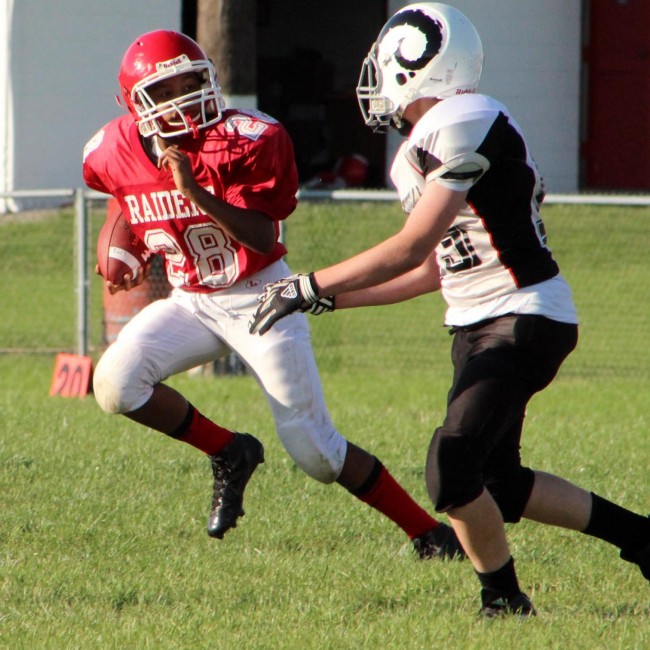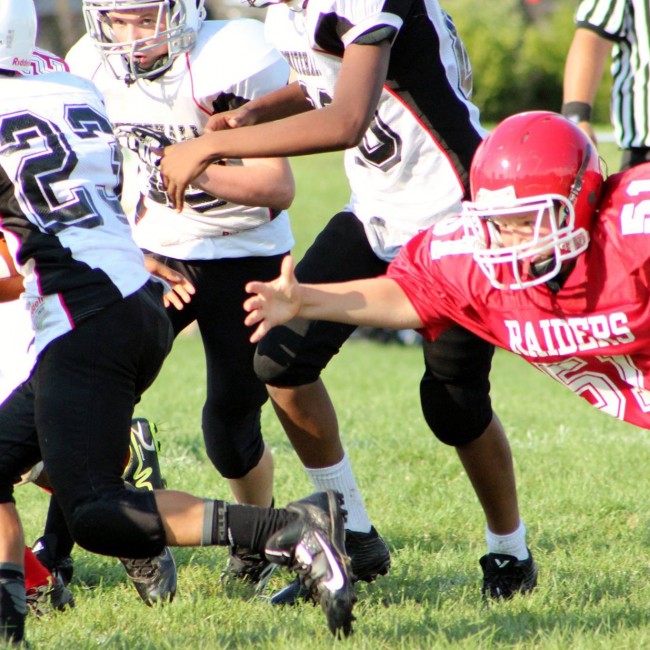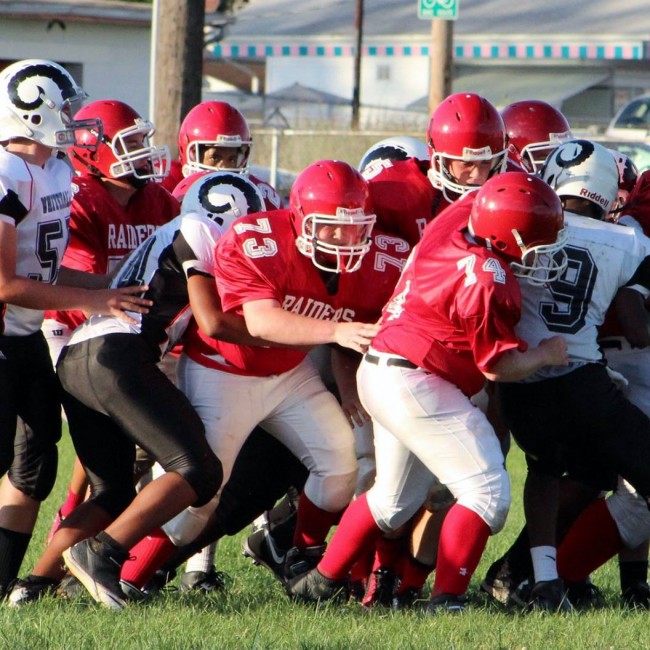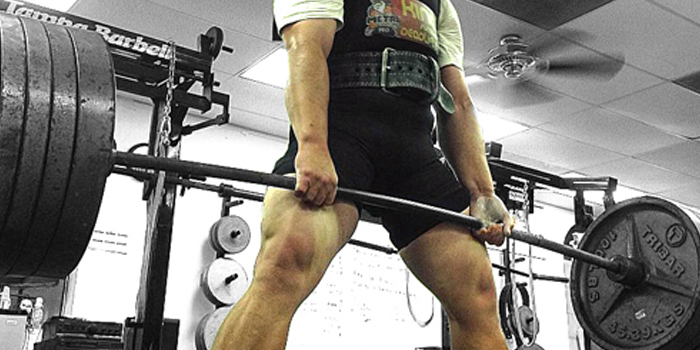
Over the past few years, I've gradually become more of a proponent of low dosing when training the high school athlete. Dr. Yessis has the most prevalent information on this subject with his 1 X 20 program, which calls for the athlete to be trained only as much as needed, not as much as he can cope with or the maximum amount possible. This isn't really anything new, but it's sometimes forgotten. In this article, I'll give some examples of how I've used low dosing and how I've integrated it into a schedule.
Low Dosing
There are many articles on this subject by Dr. Yessis, Jeff Moyer, Steve Olson and others that go into greater detail than what I will here. However, the idea is to use the minimum effective dose of training and gradually increase it with intensity, volume or direction of the chosen exercises. Early on, a wide array of exercises are used. They are gradually trimmed down as intensity rises. However, the intensity is lower than what has traditionally been used.
Young athletes (in this case, high school) can continue to gain strength through very submaximal loads. They also develop muscular endurance, induce hypertrophy and so on. However, if we use a higher intensity and a more traditional protocol, they may not develop these qualities.
Rep Range
Initially, I was sort of confused by the rep range. After all, the program is called 1 X 20 and most information uses this name to describe it. However, after listening to podcasts and watching videos of Dr. Yessis as well as corresponding with Jeff Moyer and Steve Olson, I found out that the exact rep range is somewhat arbitrary. The idea is to use low intensity and rep ranges that allow correct execution as well as adaptation at a rate that also is dosed to allow recovery. I didn't follow the exact 1 X 20 progression (which usually involves 1 X 20 for a number of sessions/weeks followed by 1 X 14 and then 2 X 8), but I did use a protocol with the same principles in mind. By the end of the first phase of our off-season, my athletes were doing six reps on the bench press and the squat and then a three-rep max test on the bench prior to spring break to evaluate where we were.
As far as exercise selection, most of this was fairly general, with some movements geared toward sprint mechanics such as knee drives, paw backs and band stomps. Each strength training session started off with 7–8 exercises used as rehabilitation/prehabilitation movements followed by 10–15 movements for strength development.
The exercises I used included the following:
Prehabilitation/Muscle Activation
- Step-downs
- External/internal rotations
- Dumbbell shrugs
- Four-way neck
- Band pull-aparts
- Band hip abduction/adduction
- Split squats
- Scapular depressions
Strength Development
- Squats
- Bench presses
- Incline bench presses, close grip
- Dumbbell Romanian deadlifts
- One-arm dumbbell rows
- Band good mornings
- Band paw backs
- Band face pulls
- Pull-ups/pull-downs to chin or chest
- Push-ups or dips (weighted if possible)
- Band stomps
- Single leg hip extensions, knee 90 degrees
- Plate front raises
- Dumbbell scaption raises
- Calf raises
I kept this very simple for the first part of the off-season and used alternating A and B workouts. Some exercises were performed on both days, such as the band paw backs and knee drives, while others alternated. For example, we squatted two times a week and benched two times a week, giving the premise of A days and B days. From here, we plugged in certain exercises for those days. In general, we used multi-joint lower exercises on the days with squats and the multi-joint upper exercises on the days with bench. It looked like the following.
A Day
All prehabilitation listed above.
Strength:
- Bench presses
- Band good mornings
- CG inclines
- One-arm dumbbell rows
- Band paw backs
- Band face pulls
- Band knee drives
- Front plate raises
- Band stomps
- Calf raises
B Day
All prehabilitation listed above.
Strength:
- Squats
- Dips or push-ups (weighted if possible)
- Dumbbell Romanian deadlifts
- Pull-ups or pull-downs to chest
- Single leg hip extensions
- Pull-downs to chin, wide grip/elbows out
- Band knee drives
- Dumbbell scaption raises
- Band paw backs
- Band stomps
Progression
I progressed this very slowly. We started in December, and during this time, we weren't doing any field work. We were just lifting. At this time, I used the following progression for four weeks:
- Week 1: 1 X 20
- Week 2: 1 X 20
- Week 3: 1 X 14
- Week 4: 1 X 14
This progression applied mainly to the large exercises. For certain movements like push-ups, dips, some of the raise variations, rows, face pulls, pull-downs, pull-ups and shrugs, I just used “max reps.” In this case, max reps meant maximum with correct technique. For the exercises that were very form dependent such as paw backs, knee drives and so on, I used a 1 X maximum of 20. However, if things weren't looking right, I shut the athlete down early. We went by the number from the previous week or session with the large movements and attempted to break that weight times the designated reps or go under it if the athletes didn't have it that day.
After this phase, we returned for the beginning of the off-season. This was a little different because we started on-the-field workouts. For the first four weeks, we used tempo runs of varying distances for all on-the-field work. We also used low intensity abdominal work and gradually increased the volume over the second two weeks of this first four-week period.
We used a set progression that increased weekly with a goal weight to hit for the prescribed reps and introduced concepts of yielding/eccentric and isometric emphasis similar to Cal Dietz in Triphasic Training. I did this by using the first A and B session of the week to set a number for the weight to use on the second two sessions of each week. I used yielding emphasis on all exercises except the bench and squat of the first A and B session of each week. I also introduced some max rep and rest-pause sets for certain exercises.
It looked like this:
- Week 1: Sessions A1 and B1, 1 X 15 on bench and squat (no yield but yield on all other movements); session A2 and B2, max reps, rest-pause extended set on bench and squat at same weight but with yielding on bench and squat along with all other exercises
- Week 2: Sessions A1 and B1, 1 X 10 at 5–10 percent above week 1 on bench and squat (no yield but yield on all other movements); session A2 and B2, max reps, rest-pause extended set on bench and squat at same weight but with yielding on bench and squat along with all other exercises
- Week 3: Sessions A1 and B1, 1 X 12 at 90–100 percent of week 2 on bench and squat (no iso but iso on all other movements); session A2 and B2, max reps, rest-pause extended set on bench and squat at same weight but with iso on bench and squat along with all other exercises
- Week 4: Sessions A1 and B1, 1 X 8 at 5–10 percent above week 3 on bench and squat (no iso but iso on all other movements); session A2 and B2, max reps, rest-pause extended set on bench and squat at same weight but with iso on bench and squat along with all other exercises
This gradually increased the intensity, but the volume didn't change very much. In these weeks, we only did more than one set if a player greatly undershot what he was capable of and chose to go up or if we had rest-pause extended sets.
For the next block, we transitioned some of the tempo work to stadium “sprints” (which aren’t really sprints but more of a teaching tool that I use for acceleration mechanics) of 10–20 meters and stair jumps that were of low volume and single response. This was done in a high/low fashion, with the A days still having the tempo work from before with low intensity abdominal work. The B days had the stadium work and jumps. In this block, I didn't use any yields or isos, and I changed the rep scheme to gradually increase intensity.
- Week 5: Sessions A1 and B1, 1 X 10 at 95–100 percent of week 4 on bench and squat; session A2 and B2, max reps, rest-pause extended set on bench and squat at same weight
- Week 6: Sessions A1 and B1, 1 X 6 at 5–10 percent above week 5 on bench and squat; session A2 and B2, max reps, rest-pause extended set on bench and squat at same weight
After this, we had a couple extra sessions that I used to test a three-rep max for the bench press. For the squat, I used a 20-rep max test to compare the results with the baseline from December. This was mainly because most of the athletes wanted to see what they could get on the bench press, so I decided to let them move some heavier weight. For the squat, I wanted to use something that would allow them to maintain technique as well as compare directly against the baseline from the beginning of the off-season.
Thoughts and looking forward
Overall, I was happy with the results from this system. Across the board, we made higher, average gains as a team than we had in the past, with not only strength gains but also better exercise technique. The technical efficiency wasn’t only limited to the weight room, as some of the specialized exercises toward sprint mechanics contributed to better execution of on-the-field movements. As we move into short sprints, I will make note of our performance. However, I don't have any doubts that this will certainly continue.
Because I know this is nothing without numbers, I'll throw a few out there. I'm guessing the biggest criticism of a protocol like the 1 X 20 is that it works because of the lower level of the athletes being trained. While this is true, keep in mind that some of my stronger and more advanced athletes also made far greater gains following the low dosing protocol than with any higher intensity protocol I had used in the past. For example, a lineman, who will be a senior next season, started out the off-season with a recorded six-rep max of 345 pounds in the squat from preliminary testing. In week three, he recorded a set of 10 at 365 pounds. He performed 12 reps at 365 pounds in week four, a set of 10 at 405 pounds in week five and a set of six at 440 pounds in week six. In the final week when we did a set of 20 in the squat to compare to the first week of the program, he easily performed 365 pounds for 20. Keep in mind, this guy isn't a monster or some Division I recruit. He's an average high school player who weighs about 235 pounds and is about six feet, two inches tall.
I also had a very undersized running back/defensive back who stands about five feet, six inches and weighs 125 pounds record a three-rep max of 205 pounds in the bench press and hit six reps in the squat at 275 pounds in the final week of the program. A few defensive backs and running backs, who all weigh in the 160- to 185-pound range, hit bench presses of 225 pounds for three reps and squats of 315 pounds for six reps. Across the board, most of my athletes had similar results, relative to baseline numbers and then post-test results (which really weren't test numbers but instead just part of the training program). None of these are world record lifts, but for high school athletes using clean technique, these are pretty good for never really lifting what anyone would consider “heavy” for the duration of the entire program.
Looking back, if anything, I would have actually kept the intensity lower for a longer period of time because I feel I jumped the gun and became impatient too early. In the future, I'll probably follow the more typical progression and stay with sets of 20 for the first three weeks followed by sets of 14 and sets of eight and then reevaluate how I want to progress.
The lifting numbers are simply what they are. They show that we became stronger, but I'm more impressed by the technical efficiency of our players in performing movements. This isn't only limited to the weight room, as what we did on the field became observable. I'll also track the results of other measures such as short sprint time (10-, 20-, and 40-yard times versus baseline results), broad jumps and reactive broad jumps that were tested in the beginning of the program.
As others have said in the past, this type of programming is a starting point and not necessarily the entirety of a program. While we will certainly progress to other things that I intend to work on (and start to specify depending on position played), this system provided a very interesting argument for lower dosing as well as consideration for use in the future when designating loading.
Photos courtesy of Chris Whitacre









